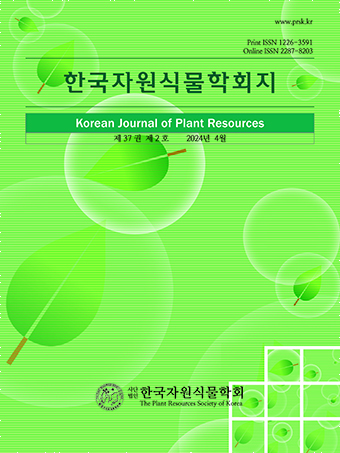Research Article
Abstract
References
Information
Clifton-Brown, J., Y.C. Chiang and T.R. Hodkinson. 2008. Miscanthus: Genetic resources and breeding potential to enhance bioenergy production. In Aspects of applied biology, biomass and energy crops III, Booth E, M Green, A Karp, I. Shield, D Stock and D Turley. Association of applied biologists, Warwick, UK. pp. 273-294.
Moon, Y.H., J.E. Lee, G.D. Yu, Y.S. Song, Y.H. Lee, K.S. Kim, K.B. Lee and Y.L. Cha. 2018. Ploidy level and reproductive organ abnormality in interspecific hybrids between tetraploid Miscanthus sacchariflorus and diploid M. sinensis bred from a single cross. Ind. Crops and Prod. 116:182-190.
10.1016/j.indcrop.2018.01.022Nishiwaki, A., A. Mizuguti, S. Kuwabara, Y. Toma, G. Ishigaki, T. Miyashita, T. Yamada and H. Matuura. 2011. Discovery of natural Miscanthus (Poaceae) triploid plants in sympatric populations of M. sacchariflorus and M. sinensis in southern Japan. Am. J. Bot. 98(1):154-159.
10.3732/ajb.100025821613094- Publisher :The Plant Resources Society of Korea
- Publisher(Ko) :한국자원식물학회
- Journal Title :Korean Journal of Plant Resources
- Journal Title(Ko) :한국자원식물학회지
- Volume : 32
- No :5
- Pages :509-518
- Received Date : 2019-08-08
- Revised Date : 2019-09-30
- Accepted Date : 2019-10-07
- DOI :https://doi.org/10.7732/kjpr.2019.32.5.509




 Korean Journal of Plant Resources
Korean Journal of Plant Resources







